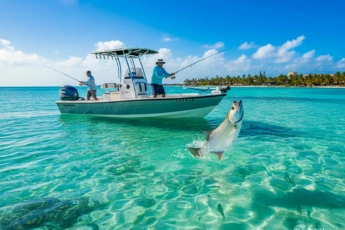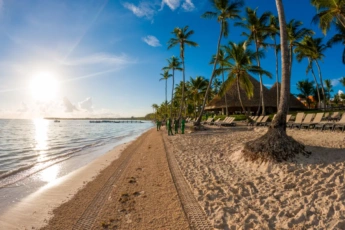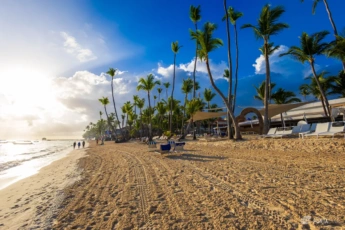Safest Caribbean Islands to Visit in 2025 – What is The Best One?
For beach lovers, the islands of the Caribbean are particularly attractive and are on the wish list as countries they must visit, but they probably are concerned about which ones are the safest ones. This is probably because they are the perfect option for relaxation, and here, the heroes of Hollywood films are constantly hiding from the paparazzi and drinking Pina Coladas.
Love beaches with white sand, spreading palms and turquoise waters? So you are in luck, because the Caribbean is an island paradise that has it all. By the way, this paradisaical vacation is good not only for newlyweds – you can always find a suitable group tour and have a great time with the whole family or group of friends. But to live on one of the islands, you must know the list of the safest Caribbean islands to visit in 2025.
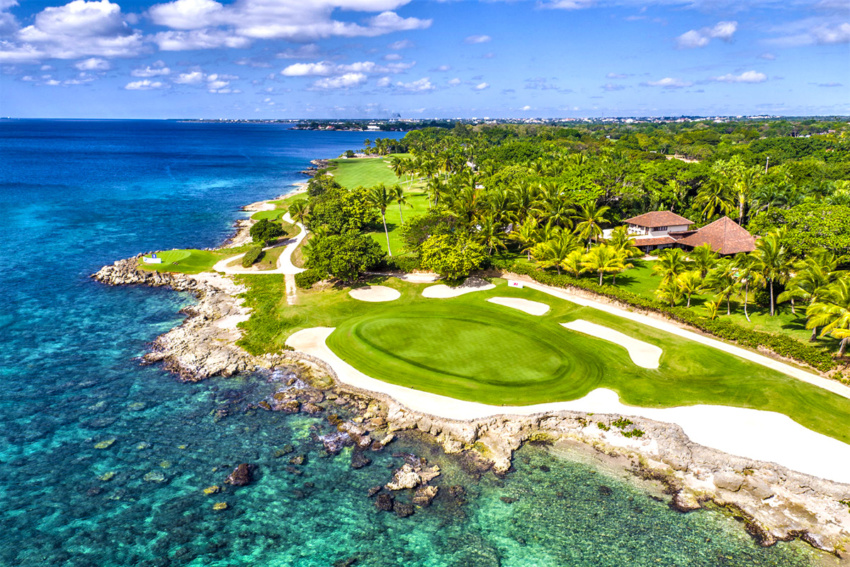
List of the safest Caribbean islands to visit
The only problem is the difficulty of choosing from over 700 different islands, islets, reefs and rocks just sticking out of the water. Take your time to google every island, as not all of them are habitable. That is why we have prepared information about the most popular places where you can spend an unforgettable vacation.
The Dominican Republic
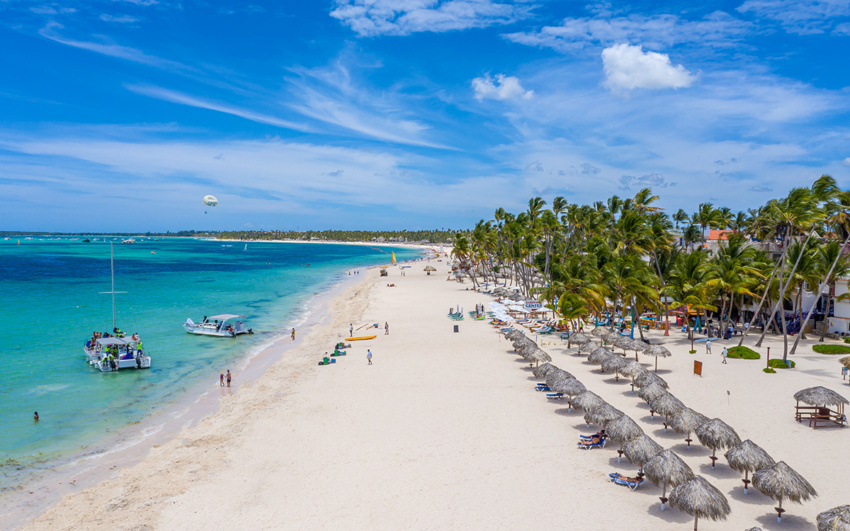
Punta Cana, Bávaro Beach, The Dominican Republic
Well, this is the most visited place in the whole Caribbean. More than 6 million foreign visitors come to this country every year. The Dominican Republic is a country on the island of Hispaniola, and it shares it with Haiti. So, the Dominican Republic makes it one of the safest Caribbean islands to visit.
The most famous resort town here is Punta Cana, where more than 4 million people come annually. Beautiful landscapes, turquoise water, a place where the Atlantic Ocean meets the Caribbean Sea – the reasons why people love spending their vacation in this paradise.
Punta Cana is one of the safest areas in the country. Nevertheless, it is way better and easier to book accommodation with a local company that knows everything about the country and can help you in different situations. Our team offers housing only in safe and guarded areas.
Aruba Island
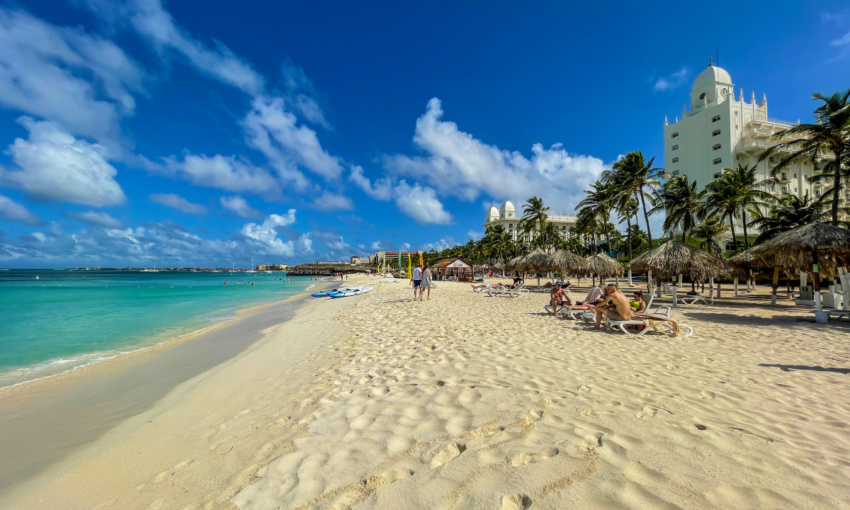
Aruba Beach
Aruba, together with Bonaire and Curacao, represents the main island group of the Netherlands Antilles. This Dutch territory has a very interesting and unique landscape for the Caribbean. The south and west coasts are distinguished by “traditional” white sandy beaches and palm trees, but the “heart” of Aruba is dominated by a desert area with cacti and dividivi (cesalpinia) trees, open rock formations and abandoned gold mines. The port of Oranjestad has well-preserved colonial buildings in predominantly pastel colors. Duty-free shopping attracts shoppers to the city.
Well, Aruba is considered a safe island. Nevertheless, there is still petty crime such as violent crime and drug gangs persist. We recommend you not walk around by yourself at night, especially in some secluded areas.
The Cayman Islands

The Cayman Islands – one of the safest in Caribbean
San Juan, the capital of Puerto Rico, has one of the best-preserved colonial developments in the Americas. It is definitely worth spending a few days wandering the streets of the city and getting to know its architecture. Also, Puerto Rico is one of the best surfing spots in the world and Rincon is the center of island surfing. It is also known for several snorkeling locations where tourists can enjoy swimming with stingrays.
Moreover, we have to mention that the Cayman Islands became popular among the wealthy. Therefore, prices are not the lowest here, and sometimes living there can be expensive enough. In addition, strict gun laws and rules make it safer for tourists.
Saint Lucia
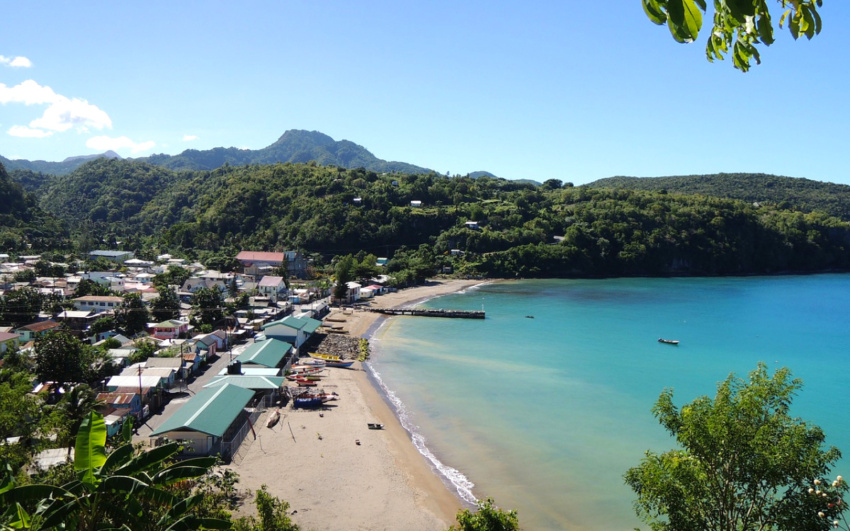
Saint Lucia
Saint Lucia (sometimes called “Santa Lucia”) is a volcanic island with stunning mountain views and magnificent landscapes. Travel lovers can explore the island on foot, mountain bike, or jeep. The most famous attraction in Saint Lucia is the majestic Twin Piton Mountains (volcanic massif with the Petit Piton, Gros Piton, and Morne Bonin mountains).
This island is one of the few places in the world where there is a volcano with an open caldera open to tourists (Soufriere volcano). Other attractions include the Botanical Gardens and Fort Rodney, an old British military base located in the Pigeon Island National Landmark.
It is one of the safest Caribbean islands in tourist areas and the crime rate is low. But still, there are cases of petty theft. Therefore, you should keep an eye on your valuables.
Barbados

Barbados is one the Caribbean islands considered the safest
About 1 million tourists visit Barbados every year. This eastern Caribbean island is the perfect place to enjoy relaxation on the breathtaking beaches. Moreover, it is also an independent British Commonwealth nation. So, the official language is English, which eliminates the language barrier.
We recommend you be careful walking alone outside your resort. In addition, we have to mention that you have to avoid wearing camouflage. There is a law that prohibits you from wearing camo clothes because it is illegal in Barbados. Probably the reason for this is not to confuse civilians with patrol soldiers.
Saint Martin
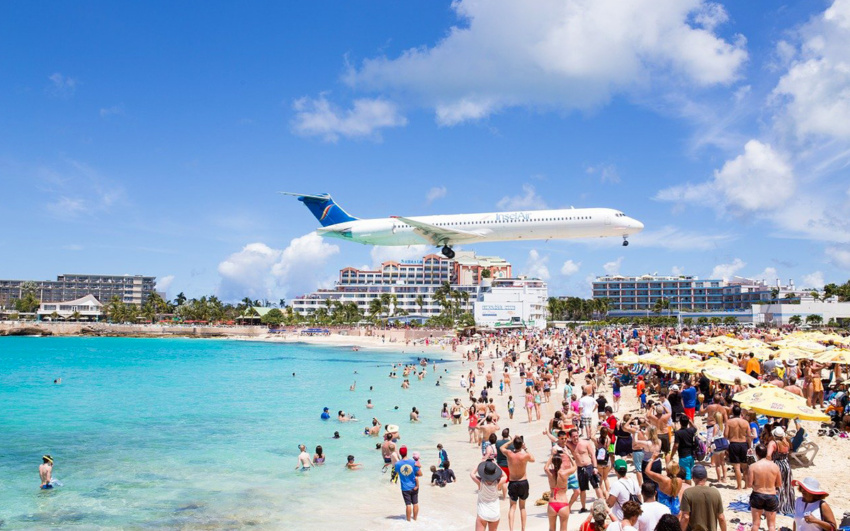
Saint Martin, Maho Beach
The island of St. Martin is called differently – Sint Maarten in Dutch or St. Martin (Saint-Martin) in English – depending on the country of residence of the speaker. This piece of land is divided between the Dutch and the French, making it the smallest island in the world that belongs to two nations at the same time.
As a result, each part of Saint Martin has its own distinct personality. Saint Martin is a renowned Caribbean yachting center, and the lagoon off Simpson Bay is considered the ideal sailing destination.
In general, the main tourist areas are safe. Nevertheless, we recommend you not forget to avoid remote areas at night. Also, you should keep your eyes open when you are on the beach, it is better not to take valuables to the beach.
Turks and Caicos
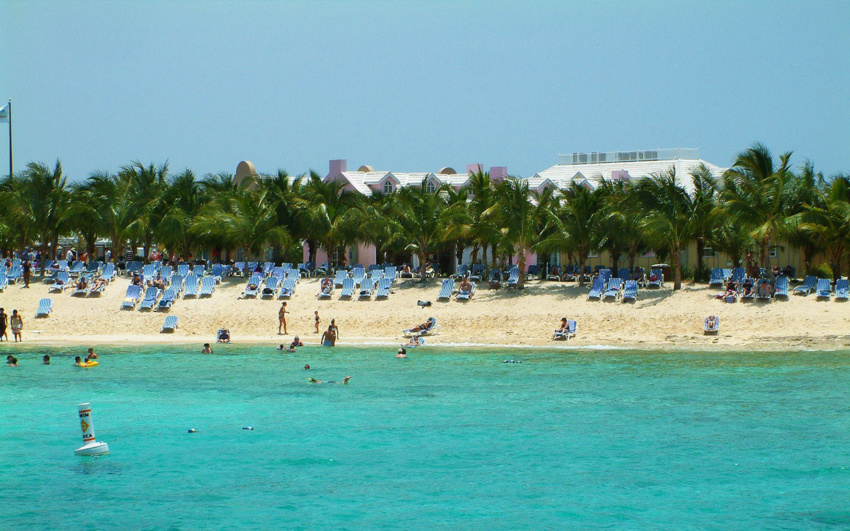
Turks and Caicos
And the next our stunning place is an archipelago of forty coral islands in the Atlantic Ocean. Also, the Turks and Caicos Islands is a British Overseas Territory. So, the official language there is English. In addition, Haitian and Dominican immigrants speak Haitian Creole and mostly Dominican Spanish. There is so much to do and discover in this paradise. Moreover, it is considered the World’s best-kept secret.
What about safety? Well, the levels of crime are low, which makes it one of the safest Caribbean islands. Nevertheless, keep your eyes open when you are outside the resort and be careful with taxi drivers there. We recommend that you negotiate a price with the driver just before getting into the car.
Montserrat
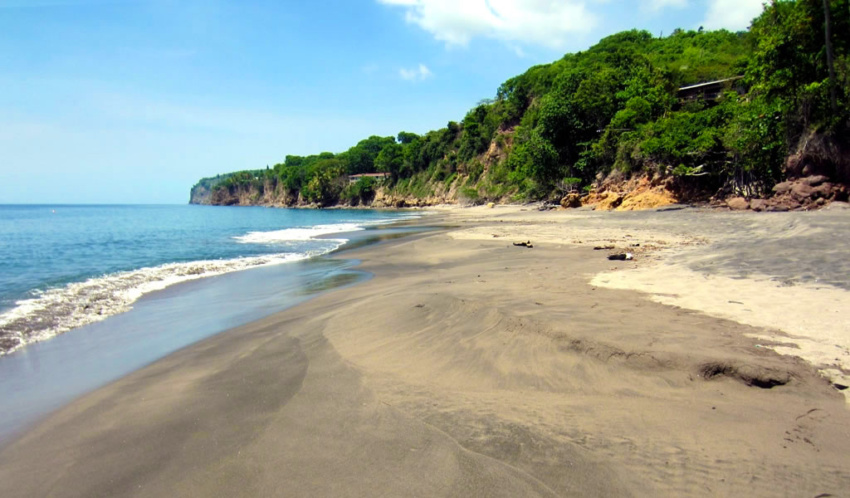
Woodlands Beach on Montserrat’s west coast. Photo by David Stanley wikipedia.org (CC BY 2.0)
Last but not least is Montserrat, which is a British Overseas Territory in the Caribbean. This island looks especially stunning from a bird’s eye view. You can see a lot of greenery. But when you step on the ground, you can see that the island is composed almost fully of volcanic rock and is mostly mountainous. In addition, there are only approximately 40 kilometers (25 miles) of coastline.
Montserrat is one of the safest islands with one the lowest crime rates. Nevertheless, there is an active Soufrière Hills volcano. The volcano became active again in 1995, but the last eruption was in 2012. Those volcanic eruptions destroyed many things, including the airport in Montserrat. Moreover, many things suffer from hurricanes that roll in between June and November.
To sum up
As can be seen, we told you about most of the safest Caribbean islands to visit. Each island is unique and impressive in its beauty. Despite this, as in any country unknown to us, you should be careful. Many of the islands have uninhabited and untouched areas, so you should avoid them if you do not want to get into trouble.
We strongly recommend you to find a company in the place where you are going before traveling. Without a doubt, it will help you avoid problems while you are abroad. If you want to travel to the Dominican Republic, the most popular city in the Caribbean – Punta Cana, we will gladly help you make your trip fabulous. Our company has more than seven years of experience in the Dominican market. We have the best types of accommodation that you will enjoy while staying here!
-
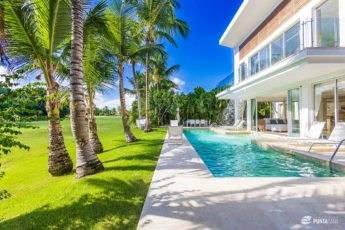
Luxury All Inclusive Villa Waterfall in Punta Cana (Bávaro, Cocotal) – Private Pool, BBQ, Maid, Chef & Meal Plans
from $1249 / night View Details -
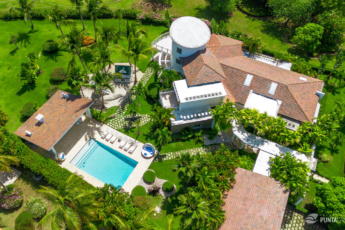
Villa Désirée – Luxury Golf Villa in Punta Cana’s Prestigious Cocotal Golf & Country Club – Huge Private Pool & BBQ Area, Kids’ Playground
from $905 / night View Details -

Villa May – New Modern Beachfront 7BR Villa with Pool & Maid in Bavaro, Los Corales
from $999 / night View Details -
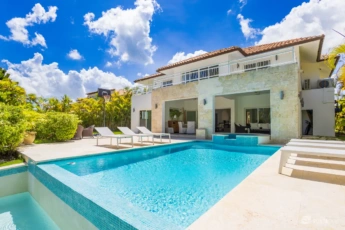
Spacious 4-BR Punta Cana Golf Villa in Cocotal – Private Pool, Jacuzzi & Basketball Hoop for Family Fun
from $756 / night View Details -
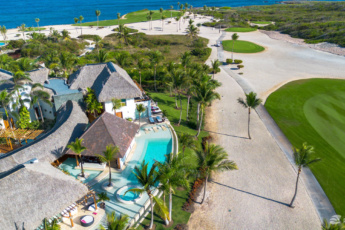
Villa Agapi (Caleton Estates 57) – The Most Beautiful Ocean View Villa in Cap Cana
from $2150 / night View Details -

Exclusive Ocean View 5-Star Cap Cana Villa for Rent – Chef, Butler, Maid & Golf Cart
from $3450 / night View Details
Frequently asked questions about
the safest Caribbean islands to visit
What is the safest Caribbean island to visit right now?
Some of the safest islands in the Caribbean, based on their low crime rates, stable political environments, and strong tourism infrastructure, include:
- The Cayman Islands are known for their low crime rate, particularly violent crime. The islands are a top destination for families and luxury travelers. George Town, the capital, and the Seven Mile Beach area are particularly secure.
- Anguilla is a small island famous for its tranquility and safety. It’s considered one of the safest islands in the Caribbean with minimal reported crime. Its isolated nature and high-end resorts contribute to its peaceful environment.
- Barbados is considered one of the safer Caribbean islands, especially in well-populated tourist areas like St. Lawrence Gap and the West Coast. The Barbadian government actively promotes safety for tourists, and while petty theft exists, violent crime against tourists is rare.
- St. Barts is known for its luxury tourism and celebrity visitors. However, it is also remarkably safe, with very low crime rates, especially in areas like Gustavia and Saint-Jean.
Which Caribbean islands have the lowest crime rates?
Caribbean islands with notably low crime rates include:
- Montserrat is known as the “Emerald Isle of the Caribbean,” this British territory is small, friendly, and has very little crime. With a population of under 5,000, it’s one of the safest places in the Caribbean.
- Turks and Caicos Islands have lower crime rates than many other Caribbean destinations, especially in tourist areas like Providenciales. However, some petty thefts can occur in less crowded places.
- Bermuda. While technically not part of the Caribbean, Bermuda is often grouped with these destinations. It has one of the lowest crime rates in the region and is considered extremely safe for tourists.
- St. Barts is a French-speaking island is renowned for its exclusivity and safety, making it a preferred spot for celebrities and affluent travelers.
Which Caribbean islands have travel warnings?
Travel advisories can change, but some Caribbean destinations are periodically subject to travel warnings, mainly due to crime or political instability:
- The U.S. State Department often issues travel advisories for Haiti due to political instability, civil unrest, and high levels of violent crime, particularly in the capital, Port-au-Prince.
- While resorts in Jamaica are generally safe, certain areas, particularly parts of Kingston and Montego Bay, can experience high levels of violent crime. Some governments recommend tourists avoid these areas unless necessary.
- Some areas in the Dominican Republic have been flagged due to petty theft, scams, and occasional violent incidents. Resorts are usually well-protected, but travelers should be cautious in urban areas like Santo Domingo.
- Certain districts in San Juan, Puerto Rico, and other major cities can be crime hotspots, particularly at night. The U.S. government advises staying in tourist areas to reduce risks.
Is travelling to Caribbean safe?
For the most part, traveling to the Caribbean is safe, especially if you stick to well-established tourist zones, resorts, and islands with stable governments. Many Caribbean countries have economies that heavily rely on tourism, so they take safety measures seriously. However, travelers should exercise general caution:
- Avoid isolated areas, especially at night.
- Be cautious with valuables and avoid wearing flashy jewelry.
- Stick to reputable transportation services and avoid unlicensed taxis.
- Most tourist-related crime involves petty theft, but violent crime is rare in major resort areas.
Which Caribbean islands are not worth visiting?
While most Caribbean islands have something to offer, some places may be less appealing due to safety concerns, political instability, or a lack of tourist infrastructure:
- Due to severe political unrest, violent crime, and natural disasters, Haiti is currently not considered safe for tourism by many governments.
- While Jamaica has some beautiful resort areas, certain parts, particularly in Kingston and Montego Bay, can have safety issues related to violent crime. However, staying within the resort areas usually mitigates these risks.
- Though popular for tourism, certain parts of Santo Domingo, the Dominican Republic, and some remote areas can be less desirable due to safety concerns and limited infrastructure. Resorts, however, are generally safe.
Is the Bahamas or Caribbean safer?
Both the Bahamas and other Caribbean islands can be safe for tourists, but it depends on the specific area:
- Nassau, the capital of the Bahamas, has seen an uptick in petty theft and violent crime in some neighborhoods. However, tourist-heavy areas like Paradise Island, Exuma, and Grand Bahama are generally safe. As with other destinations, avoiding isolated areas and sticking to resorts can help ensure safety.
- Certain islands like the Cayman Islands, Barbados, and Anguilla are considered safer than many parts of the Bahamas. These islands have low crime rates and are focused on tourism. However, destinations like Jamaica and the Dominican Republic might have higher crime rates compared to the more peaceful islands in the Caribbean.
What is the poorest Caribbean islands?
Among Caribbean countries, the poorest ones are:
- Haiti is widely considered the poorest country in the Caribbean and the Western Hemisphere. It struggles with significant poverty, political instability, and a lack of infrastructure. The country’s per capita GDP is one of the lowest in the world, with many Haitians living on less than $2 per day. The 2010 earthquake further devastated Haiti’s economy, and it has since struggled with natural disasters, economic instability, and limited resources.
- Other islands facing economic difficulties include Dominica and Saint Vincent and the Grenadines, although their poverty levels are not as extreme as Haiti’s. These islands depend heavily on agriculture and tourism, both of which are vulnerable to climate changes and global market fluctuations.
Which is the least visited Caribbean island?
Not so many Caribbean islands have a low rate of visits:
- Montserrat is one of the least visited islands in the Caribbean due to the 1995 volcanic eruption that devastated the southern part of the island, including its capital, Plymouth. Although the island has a small population and some beautiful natural attractions, the remaining volcanic exclusion zone keeps many tourists away.
- Saba and Statia (Sint Eustatius) are also less visited Caribbean islands. They offer pristine natural beauty and unique ecosystems, but their remote location and smaller tourism infrastructure make them less popular among casual travelers.
When not to go to the Caribbean?
The Caribbean’s peak hurricane season runs from June to November, with the highest risk of storms and hurricanes typically occurring between August and October. While it’s still possible to visit the Caribbean during this time, travelers should be cautious as hurricanes can severely disrupt plans, with potential flight cancellations and damaged infrastructure.
- The rainiest months can vary by island, but generally, late summer and early fall see the heaviest rainfall, which could also interfere with vacation plans.
- If you’re looking for lower costs or less crowded areas, it’s also a good idea to avoid the region during peak tourist seasons like December through March.
What are the risks in the Caribbean?
Travelers to the Caribbean should be aware of the following risks:
- Hurricanes. As mentioned, hurricane season runs from June to November, and even without direct hits, storms can disrupt travel.
- Crime. While many parts of the Caribbean are safe, certain areas can experience petty theft, scams, and occasional violent crime. Islands like Jamaica (especially Kingston and Montego Bay) and parts of the Dominican Republic can have higher crime rates.
- Health concerns. Mosquito-borne diseases like dengue fever, Zika virus, and chikungunya can be present, so precautions like using insect repellent are important.
- Political instability. Some islands, such as Haiti and occasionally Puerto Rico, experience political protests or unrest, which could be disruptive to travel plans.
- Road safety. In some less developed islands, roads may be poorly maintained, and driving standards may not be high. Travelers should be cautious when renting cars.
What islands to stay away from?
While most Caribbean islands are safe for tourists, the following places may require extra caution or are less recommended for certain travelers:
- Haiti. Due to high crime rates, political instability, and limited tourist infrastructure, many governments issue travel warnings advising against non-essential travel to Haiti.
- Jamaica. While Jamaica is a beautiful island, certain areas in Kingston and Montego Bay experience high levels of violent crime. If visiting Jamaica, it’s best to stay in well-known tourist resorts and avoid venturing into unsafe urban areas.
- Parts of the Dominican Republic. While popular resort areas are generally safe, some urban and rural areas, especially in Santo Domingo, can have higher crime rates.
- Puerto Rico (certain areas). Some areas in San Juan and other major cities may experience higher crime rates, especially after natural disasters like hurricanes, which have affected infrastructure.
In summary, while the Caribbean is generally a safe destination, it’s essential to be aware of specific risks associated with hurricanes, crime in particular areas, and travel advisories issued for certain islands like Haiti and Jamaica. Always stay updated on current conditions before traveling.
Updated on: . Author:

